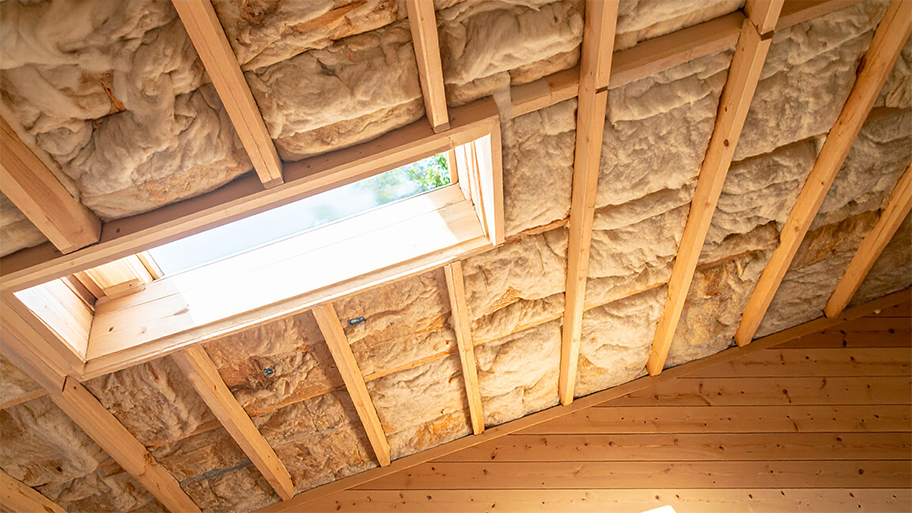
Insulating your attic can massively improve your home’s efficiency and reduce electric bills. Use this guide to find out what attic insulation will cost you.
Get the best reflection for your home


A properly installed radiant barrier can help reduce heat gain in your home, lowering your cooling costs.
Common radiant barrier problems include moisture buildup, improper installation, and dust buildup.
Improving your attic's ventilation can help your radiant barrier function well.
A radiant barrier can be an effective way to control your cooling costs and keep your home comfortable, even on the hottest days of summer. The barrier has a reflective surface, so heat bounces off it, rather than getting absorbed. Being aware of common radiant barrier problems can help you ensure that yours works effectively, keeping you cool, no matter how hot it gets.

Radiant barrier problems stem from two sources: improper installation and poor maintenance. Here's what you can do about each issue.
Dust can build up on the surface of a radiant barrier, making it less effective. A radiant barrier works by reflecting heat. To do that, it needs a shiny, reflective surface. However, when dust collects on it, the surface becomes matte. Instead of reflecting the heat, the barrier starts absorbing it.
If you notice dust collecting on the surface of the radiant barrier, use a microfiber cloth to wipe it away. Dust buildup can also be a sign of poor ventilation in the attic, which you should address.
Moisture, often in the form of condensation, can collect on the surface of the radiant barrier, damaging it. Moisture buildup is more common during the cooler months of the year when temperatures dip below freezing.
Condensation can do more than impact the efficiency of a radiant barrier. It can also lead to mold and mildew growth, which can affect the structure of your attic and lead to respiratory problems.
If you're concerned about moisture, you have a few options. One is to make sure your attic is properly ventilated. Another is to place a dehumidifier to remove excess moisture from the air. Installing a moisture barrier can also help you control the humidity in your attic and protect your radiant barrier.
Depending on the extent of the moisture damage, you may have to replace the radiant barrier to remove any traces of mildew or mold.
Gaps or spaces between radiant barrier panels can cause air leaks, which affect the barrier's overall efficacy. When there are gaps, hot air can travel past the barrier, making it ineffective.
Air leaks can develop during the installation process or afterward if the barrier tears or becomes damaged. Properly installing a radiant barrier can reduce leaks, as can regular inspections and repairs as needed.
A lack of sufficient attic ventilation can cause problems with your radiant barrier in several ways. As mentioned, when there's not enough airflow, dust and moisture can collect on the barrier's surface, making it less efficient.
Poor ventilation can also make an attic hotter, limiting the use of a radiant barrier.
Installing roof vents can improve airflow in your attic, protect your radiant barrier, and keep your cooling costs under control.
A poor installation job can lead to numerous radiant barrier problems, from air leaks to moisture concerns. Having a professional attic insulation company install your radiant barrier can help prevent installation problems. If you suspect the barrier wasn't installed correctly, a professional can inspect it and correct any issues, improving its efficiency.
According to Angi data, 11% of homeowners who install blown-in insulation also opt to install energy-saving radiant barrier protection. Other common add-on services include removing old insulation, installing sound proofing, and insulating hot water pipes.
Wondering whether to hire an attic insulation expert to diagnose and fix your radiant barrier? You should strongly consider hiring a professional at the first sign of a radiant barrier issue to avoid more extensive (and costly) repairs.
If you spot visible moisture build-up on the radiant barrier, especially if it’s dripping into the attic, that’s a clear sign that there’s a persistent problem. Consult a local attic insulation specialist for any suspected radiant barrier issues to protect your home properly.
From average costs to expert advice, get all the answers you need to get your job done.

Insulating your attic can massively improve your home’s efficiency and reduce electric bills. Use this guide to find out what attic insulation will cost you.

Discover roof insulation costs, including average prices, key cost factors, and expert tips to help you budget and save on your next project.

How much does a radiant barrier cost? Our guide breaks down prices by type of barrier and size of your attic space.

Read our step-by-step guide and learn how to remove fiberglass insulation. Our instructions will help you remove this tricky material quickly and safely.

Is a radiant barrier worth it for your home? It depends on the climate where you live, installation factors, and the cost of keeping your home cool.

Use this DIY checklist for insulation repair to make your living space more comfortable and reduce your heating and cooling bills in the process.